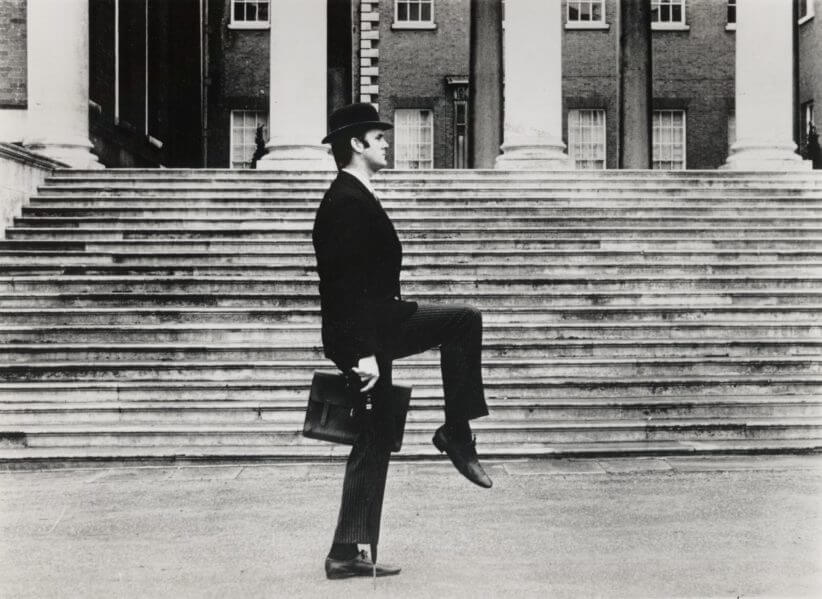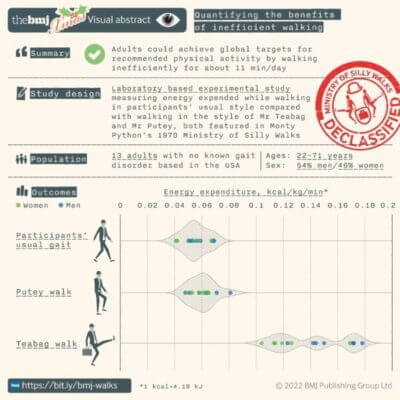A new study published in The BMJ has found that adults could meet global physical activity targets by walking inefficiently for just a few minutes each day.
Despite campaigns to increase physical activity, global rates of physical inactivity have remained unchanged over the past 20 years. The study aimed to measure the energy expenditure of low efficiency walking compared to high efficiency walking.
The study included 13 healthy adults, who were shown a video of the Monty Python Ministry of Silly Walks sketch before performing three walking trials lasting five minutes each. In the first trial, participants walked in their usual style, while in the next two trials they tried to recreate the walks of Mr Teabag and Mr Putey as seen in the video.
The results showed that only the Teabag walk resulted in significantly greater energy expenditure, about 2.5 times that of normal walking. This qualified as vigorous intensity exercise, and exchanging one minute of normal walking with one minute of Teabag walking was associated with an increase in energy expenditure of 8 kcal/min for men and 5 kcal/min for women.
The researchers estimate that adults could achieve 75 minutes of vigorous intensity physical activity per week by walking in the Teabag style for about 11 min/day, and substituting normal style steps with Teabag style steps for about 12-19 min/day could increase daily energy expenditure by approximately 100 kcal.
The researchers acknowledge that some people, including those with disabilities or health conditions, may not be able to perform the Teabag or Putey walks, but they suggest that they could increase energy expenditure in their daily movements with inefficiency as the goal.
“But they might be able to otherwise increase energy expenditure in their daily movements, with inefficiency as the goal,” they say.
They also note that short bursts of physical activity, even as short as one to two minutes, accumulated over time, can provide cardiovascular benefits, so people could engage in regular bursts of inefficient walking at convenient times and places, including indoors.
“Our analysis of the energy consumed during different styles of walking seeks to empower people to move their own bodies in more energetic—and hopefully joyful—ways,” they write. “Efforts to boost cardiovascular fitness should embrace inclusivity and inefficiency for all.”


